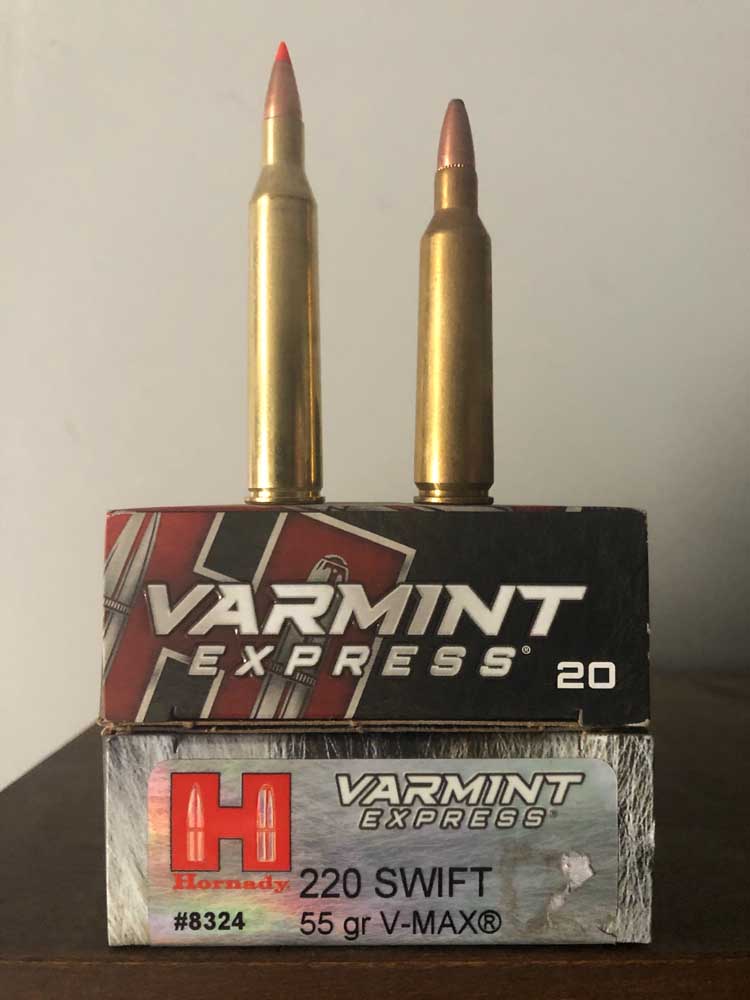Shooting the Breeze: The .220 Swift
Published 1:15 pm Saturday, March 12, 2022

- The .220 Swift, left, next to its more popular competition, the .22-250 Remington.
Seeing the increasing public interest in high-velocity smallbores spurred primarily by a growing varmint hunting community, Winchester designed the first commercial cartridge to reach a muzzle velocity of 4,000 feet per second. In 1935, the Winchester Model 54 in .220 Swift was released, spitting a 48 grain bullet to the never-before-achieved speed of 4,140 feet per second!
Trending
The 6mm Lee Navy cartridge was the parent case and was simply necked down from .244 to .224 caliber. The debut of this rubber-burning cartridge was met with glee and skepticism alike.
The 48 grain bullet was the subject of both praise and scorn. One hunter would write in that he had killed a giant bull elk or bear with a single shot while another would despair of an opposite experience, pumping round after round into a gangly mule deer or desert sheep before it bit the dust.
It led to head-scratching and extreme prejudice in many cases. Most seasoned hunters scoffed at the idea of using such small, frangible bullets on any big game. Opinions varied as widely as the reported results.
Trending
As time passed, certain gun writers began to decry the Swift for its semi-rimmed case and growing reputation as a “barrel burner.” They claimed accuracy tapered off as early as 200-300 rounds, while others claimed that no matter what you needed to plan on a new barrel at 1,000 rounds.
Some rifles, shot repeatedly (as with ground squirrels) would have likely worn out early with such high-velocity performance. Others were likely the victims of mercuric primers, poor cleaning practices and bad press.
Despite what you may have heard, the Swift is no different than any other cartridge. With proper care and cleaning, they will continue to perform for a lifetime without having to use kid gloves. And with modern components, the Swift is capable of reaching higher velocities and making smaller groups than ever.
Its closest competition has always come from the .22-250 Remington, the old .250-3000 Savage necked down to .224 diameter. The .22-250 is more ubiquitous in both rifles and ammo, but it won’t outrun the Swift if both are loaded to max potential in rifles of comparable ilk.
My own personal Swift is a rebuilt hand-me-down Ruger M77 Bicentennial. The original factory barrel was marked commemorating 200 years of United States independence. It now wears a brand new, heavy contour Douglas barrel installed by the skillful hands of Randy Wills out of Bend. After refinishing the stock and putting it all back together, I would say we are ready to go come what may.
For the country boy or country girl in search of a unique, light-recoiling, extremely flat-shooting rifle capable of dispatching varmints, predators, the occasional deer, antelope or beef steer, the .220 Swift is a cartridge with a long history that still can make the cut today.
Are you a fan of the .220 Swift? Write to us at shootingthebreezebme@gmail.com and check us out on Facebook!









